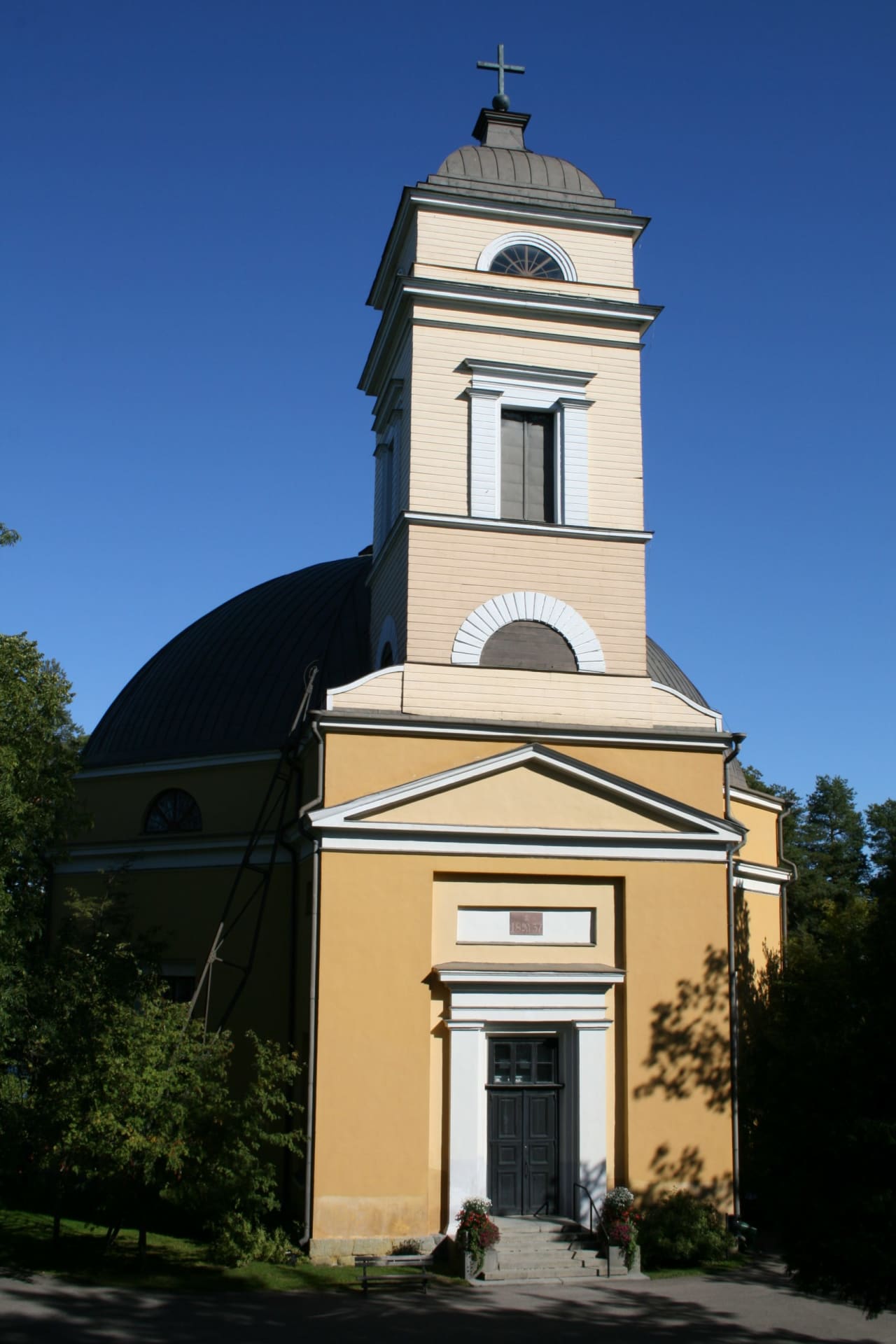Nokia Church

For centuries, Nokia was part of the ancient parish of Pirkkala, and all earlier churches were located on the Pirkkala side, leaving very few traces behind. The present church of Nokia, then still Pirkkala, was completed in 1838.
The church was designed by the office of Carl Ludvig Engel, with the Pantheon in Rome as its model, featuring a circular plan and a dome covering the entire hall. The round form was altered during renovations in 1904 and 1907, when the original sacristy was converted into a choir and a new sacristy was built behind it. The pulpit was moved from above the altar to its right side, and the organ loft was expanded into a gallery. The first organ dated from 1876, with a new one installed in 1907.
A major renovation took place in 1973–1974 under architect Seppo Rihlama. The pews were cushioned, a marble altar table and new church textiles were acquired, and a new 32-stop organ was installed by the Kangasala Organ Factory. The colour scheme was also transformed with deep symbolic meaning: the floor represents the earth and the militant congregation, the ceiling heaven and the triumphant congregation. The upward-deepening blue of the dome symbolises growing joy nearer to God, while the orange stripe beneath marks the boundary of time and eternity. Pilasters represent the communion of saints, reminding that through Christ’s atonement, humanity has access from earth to heaven. The yellow walls symbolise victory, kingship, and Christ himself. A multifunctional hall and a church museum were also built beneath the church, housing around 100 historical parish artefacts. The green tones of the hall refer to Psalm 23, while the rainbow painted on the ceiling recalls God’s promise after the Flood.
The altarpiece, painted by Felix Frang, was added in 1907. In 1937, the altar rail and pulpit were decorated with copper reliefs by Väinö Richard Rautalin, and stained-glass windows by Lennart Segerstråle were installed on either side of the altar.

